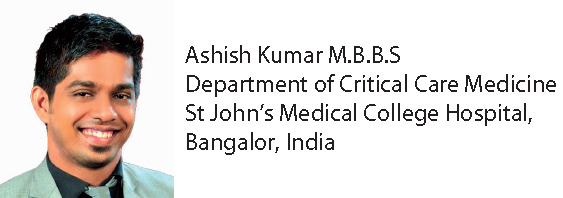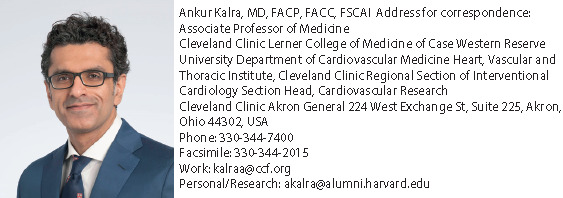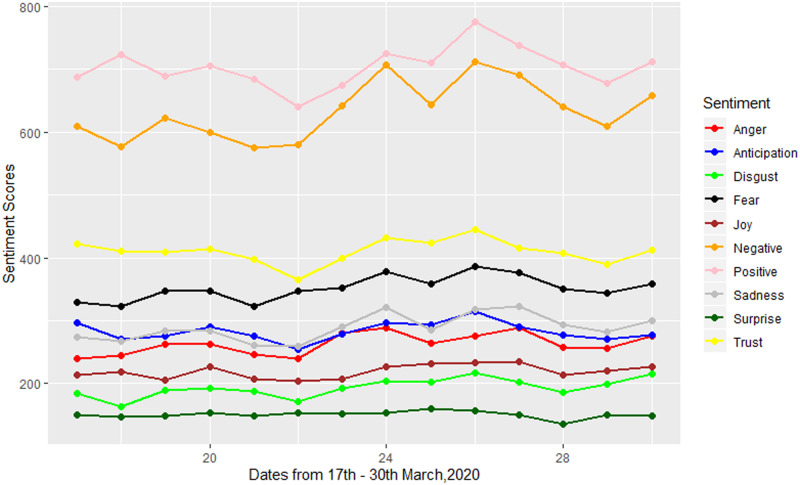A short review of the emotional effects produced by social media posts during this global crisis
Ever since the first headline reporting the coronavirus disease 2019 (COVID-19) outbreak in December 2019, social media has served as a breeding ground for the contagion of information about the novel coronavirus. The information, a potpourri of truth and lies, has exploded across various social media platforms, outpacing the spread of the disease. A social media pandemic has preceded the disease pandemic, stirring a diversified spectrum of emotions. While the world has witnessed pandemics before, all were in the pre-social media era. The effect of social media during such an unprecedented pandemic crisis has yet to be identified.
The assembling of information vs. misinformation, trust-building vs. fear-mongering, and anger vs. comfort are a few of the sentiments reverberating in the social media pandemic. In the new reality of social distancing and self-quarantined lockdown, Twitter has emerged as a paramount platform for crisis communication, with a COVID-19-related tweet every 45 ms.1 We computed a sentiment analysis of tweets, retweets, and replies with #COVID19 over the 2-week period, from March 17-30, 2020, to analyse the perception of the COVID-19-related information across social media.
We used the Twitter application programming interface (API) to record a sample of 10 000 tweets, retweets, and replies with a #COVID19 hashtag. Tweets, retweets, and replies were restricted to English language only for the analysis. The twitteR package was used to search tweets with the help of the standard Twitter API. The Syuzhet package in R was used for the sentiment analysis.2 The nrc sentiment lexicons of the tidytext package were used to assign scores for the positive/negative sentiment, and for possible emotions such as anger, fear, and trust. The nrc sentiment lexicon categorizes words in a binary fashion into categories of positive and negative, which were further categorized into mutually non-exclusive sentiments such as anticipation, anger, disgust, joy, fear, surprise, sadness, and trust. Statistical analysis was performed using R version 3.6.2.
A total of 1 400 000 tweets were analysed. Despite the unprecedented global health crisis, the tweets demonstrated a trend toward an overall positive sentiment, with a considerable tone of trust. The most perceived negative sentiment was fear. The least perceived positive sentiments were joy and surprise, whilst the least perceived negative sentiments were disgust and anger (Figure 1).
Figure 1.
Plot for sentiment analysis of tweets, retweets, and replies with #COVID19 hashtag between 17–30 March 2020. The x-axis represents days and the y-axis represents sentiment scores for tweets based on the nrc sentiment lexicon.
Pros and cons of social media in public health and medicine have been reported.3 During the present COVID-19 pandemic, social media has been used as a platform by health agencies, government organizations, hospitals, and medical journals to disseminate information in a timely and up-to-date manner. Social media is also being used by frontline physicians treating COVID-19 patients to update the healthcare community expeditiously with their experience.4
Unfortunately, social media has also been the conduit for spreading rumours and misinformation, and creating a sense of false breakthrough in this gargantuan health crisis. Several accounts have been removed by Twitter on the grounds of spreading misinformation regarding the pandemic spread. As healthcare providers on the frontline taking care of our patients, now is the time to lead without a title and let science be the beacon. It is more important than ever for all of us to unite and raise our voices against misinformation, and only allow evidence-based medicine to guide us through this crisis of our lifetime.
Conflict of interest: none declared.
References
References are available as supplementary material at European Heart Journal online.



Supplementary Material
Contributor Information
Ashish Kumar, Department of Critical Care Medicine, St John’s Medical College Hospital, Bangalor, India.
Safi U Khan, Department of Medicine, West Virginia Universit, Morgantown, WV, USA.
Associated Data
This section collects any data citations, data availability statements, or supplementary materials included in this article.



